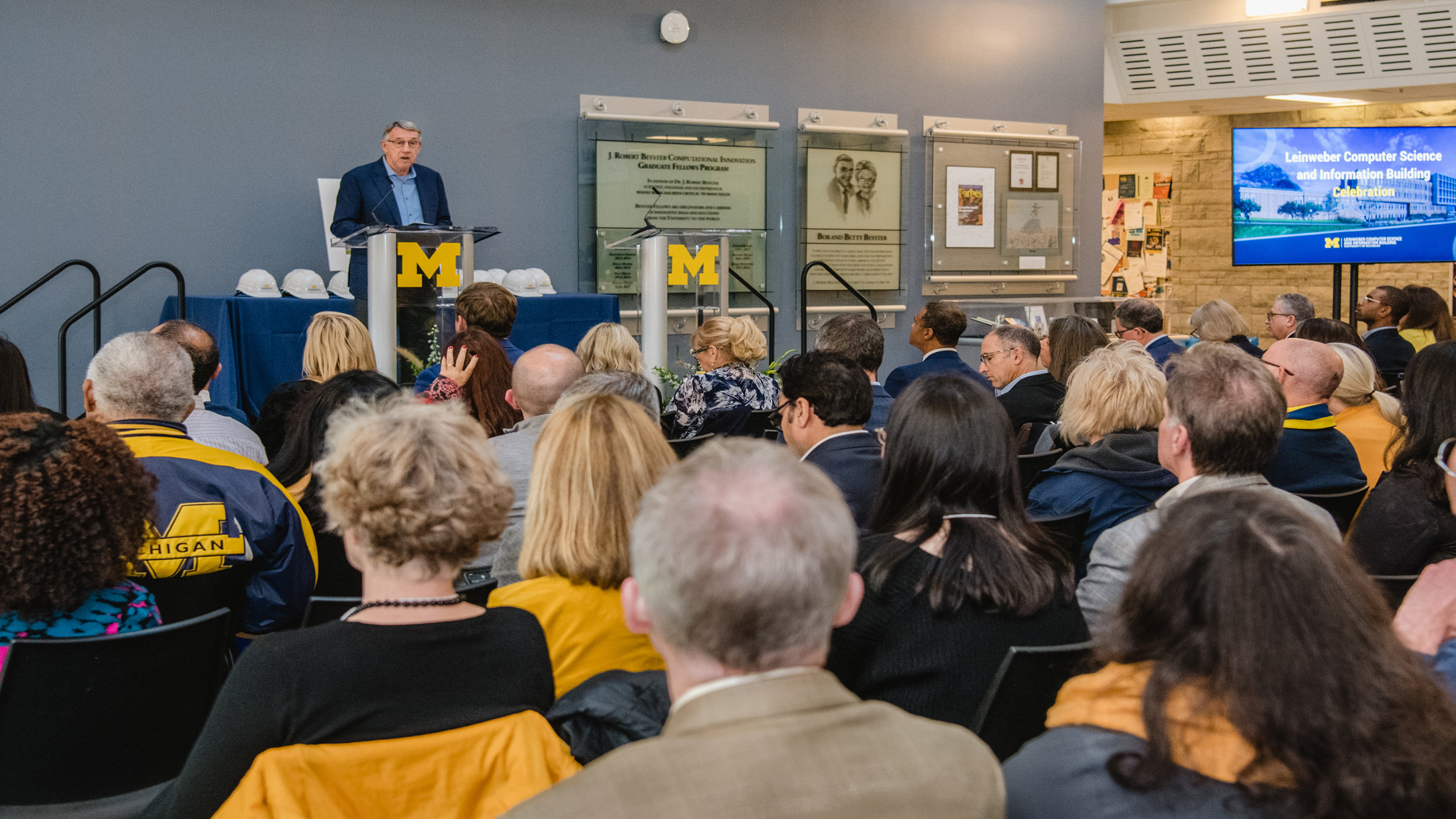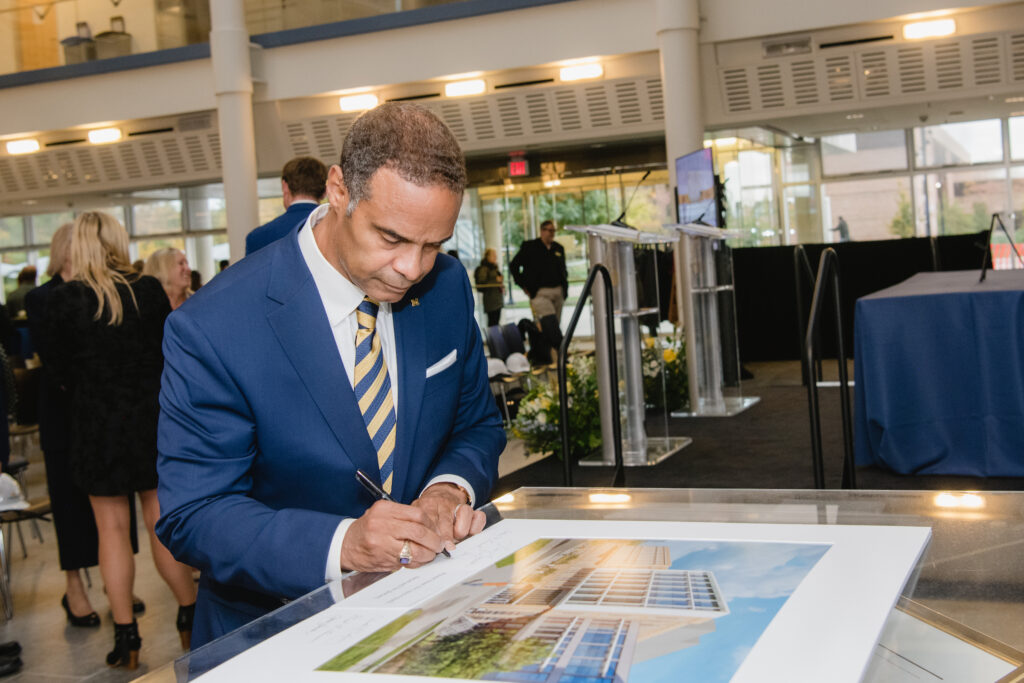
U-M celebrates Leinweber Computer Science and Information Building construction
Housing Computer Science and Engineering together with the School of Information will drive advances in information and computing through a convergence of disciplines.

Housing Computer Science and Engineering together with the School of Information will drive advances in information and computing through a convergence of disciplines.

Starting in 2025, top scholars in computing and information will come together in the University of Michigan’s new Leinweber Computer Science and Information Building to help solve some of the greatest challenges in modern medicine, transportation, smart infrastructure and more. Leaders at Michigan celebrated construction last Friday, which has been underway since April of this year.

The $145 million facility will co-locate the Computer Science and Engineering Division (CSE) of Michigan Engineering and the School of Information (UMSI) for the first time, thereby removing barriers between like-minded colleagues. Currently, CSE and UMSI are located on different campuses a few miles apart, and UMSI is spread across five different locations in downtown Ann Arbor.
The building is named in recognition of software entrepreneur Larry D. Leinweber, who made a $25 million gift for its construction.
“Michigan has a longstanding reputation as one of the leaders and best in computer science and information,” Leinweber said. “We hope this new gift will further advance both of these fields and amplify U-M’s impact by bringing some of the brightest minds in engineering and information science together in one collaborative setting.”
In the last 10 years, the number of students enrolled in undergraduate and graduate programs in both CSE and UMSI has quadrupled, and the new building will provide much-needed space to meet the increasing demand for computer science and information graduates for research, industry and education.
The 163,000-square-foot, four-story complex is the largest construction project on North Campus in decades. It will house reconfigurable classrooms, student maker labs, collaboration spaces, research labs and two of the biggest lecture halls on North Campus. Living the university value of sustainability, an investment of $20 million in a geothermal exchange system for heating and cooling will make the building emissions-free.

CSE and UMSI have a long history of transformative collaboration. Michigan’s legacy of leadership in computing and information dates back to the 1950s when its graduate degree in computing was established, making it one of the oldest computing programs in the nation. Today, Michigan continues to be on the cutting edge of advances in artificial intelligence, device architecture, human-computer interaction, social networks, quantum computing, data analysis and more.
“Today we are celebrating not only a magnificent learning and research facility, but also years of collaboration between the Computer Science and Engineering Division and the School of Information,” said Alec D. Gallimore, the Robert J. Vlasic Dean of Engineering.
This convergence of disciplines will strengthen the academic culture, promoting the fusion of human-centered and technical perspectives to critical areas such as artificial intelligence, human-computer interaction and machine learning.
“This is our chance to build an environment that enhances student learning with the tools and exciting collaborations with CSE students, so we can fully realize the innovative pedagogies we are now instilling in our curriculum,” said Elizabeth Yakel, Interim Dean and C. Olivia Frost Collegiate Professor of Information at the School of Information.
“Co-location with Computer Science and Engineering unlocks fresh opportunities for instruction and collaboration,” said Thomas A. Finholt, U-M Vice Provost for Academic and Budgetary Affairs and Dean Emeritus of the School of Information. “Working together, we can more effectively create and share information with technology, toward our goal of building a better world.”
Gallimore is also the Richard F. and Eleanor A. Towner Professor, an Arthur F. Thurnau Professor and professor of aerospace engineering. Finholt is also a professor of information.